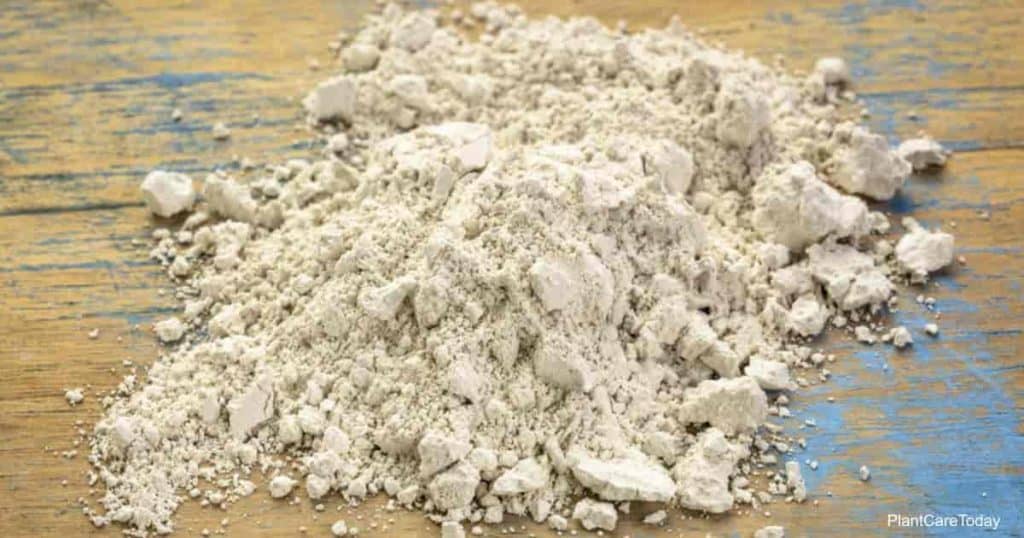Both diatomaceous earth (often abbreviated as DE) and bentonite clay (BC) have many uses. People have used these substances for centuries. In the past few years, they’ve grown in popularity for different reasons.
Many people still can’t tell the difference between the two. Some are familiar with one or the other, but can’t explain what makes them different or better for a specific use.

So, are diatomaceous earth and bentonite clay same? This article will share the differences between the two and delve into their uses.
Are Diatomaceous Earth and Bentonite Clay the Same?
The short answer is “no.” These two substances are not the same. Quite often, DE is referred to as dirt, while BC is a clay.
Actually, DE isn’t dirt. It’s silica containing the fossilized remains of prehistoric algae. BC, on the other hand, is volcanic ash.
To get a more in-depth answer, we need to look closer at the composition and uses of these two substances.
What Are the Composition Differences Between the Two Substances?
As mentioned above, even though many people call DE “dirt,” it isn’t. DE consists of fossilized microscopic algae known as diatoms that existed many millennia ago.
These algae collected on lake beds when they died and became fossilized over many years. Most of the lake beds are now dry. The DE deposits get collected (or mined) and ground up into a fine powder with an off-white color.
DE contains many trace minerals, but the most common is silica.
Bentonite clay is a kind of clay, so it is closer to dirt than DE. Bentonite clay gets mined from volcanic ash deposits, making it a rich source of trace minerals.
The most prevalent mineral is montmorillonite, a common mineral in volcanic ash. Bentonite clay, like diatomaceous earth, gets ground after being mined. This processing produces a delicate, earthy, brown powder.
What are the Uses for Diatomaceous Earth?
Diatomaceous earth has many different uses around the garden, revolving around pest control. When it comes to gardening, here are the main uses for DE in the garden.
Slug Control
Diatomaceous earth has high water-absorbing capabilities. As a result, it can quickly dehydrate slugs in the garden. Many species of slugs sense DE and will avoid it whenever they can.
Slugs love many common garden plants, such as lettuce, cabbage, basil, sunflower, and marigold. They will eat these plants every chance they get. Since diatomaceous earth is non-toxic, you can sprinkle it on the plants, which will deter the slugs.
Pest Control for Bugs
Due to its dehydrating nature, DE is an effective form of pest control. It sticks to the exoskeleton of insects and slowly dehydrates them. Be careful, because DE doesn’t discriminate. For example, don’t sprinkle it on flowers that bees pollinate.
For example, use diatomaceous earth on aphids and use DE to kill tomato hornworms.
Pest Control for Your Pets
If any of your animals have a flea, mite, or tick problem, DE can remedy the situation. Apply DE directly to the fur of the animal. You can also stop the issue before it starts by sprinkling DE at the edges of your garden or around your yard.
Other Uses
Food grade DE is often consumed for its health benefits. It enhances bone, collagen, cartilage, and artery health. These benefits are due to its silica content. There is also pool grade DE, which can provide water filtration for pools.
What Are the Applications Where Diatomaceous Earth is Better than Bentonite Clay?
For the most part, DE is an option for pest control in gardens. It is effective and non-toxic. You can sprinkle DE on edible plants and use it around children and pets without worry.
What Are the Uses for Bentonite Clay?
Bentonite clay is also non-toxic, but it has different uses.
Use With Sandy Soil
Gardeners often mix bentonite clay with sandy soil in the garden. It blends in with the earth, giving the soil better water retention making it more conducive to plant growth.
Use With Fertilizer
Bentonite is also often mixed with other organic material, such as mulch or compost, before being added to the soil. Due to its high mineral content, it helps to boost growth potential as it acts as a fertilizer.
Used in Pest Control
A thin layer of clay powder works to confuse pests in blocking the scent of the desired plant and alters (apparently) the taste of it as well.
What are the Applications Where Bentonite Clay is Better than Diatomaceous Earth?
Bentonite is for binding sandy soil. Some gardeners use it in conjunction with organic fertilizer.
For these purposes, it is much better than DE, which might end up dehydrating plants and killing beneficial insects.
Both diatomaceous earth and bentonite clay are useful. These non-toxic substances help to achieve a top-notch garden.